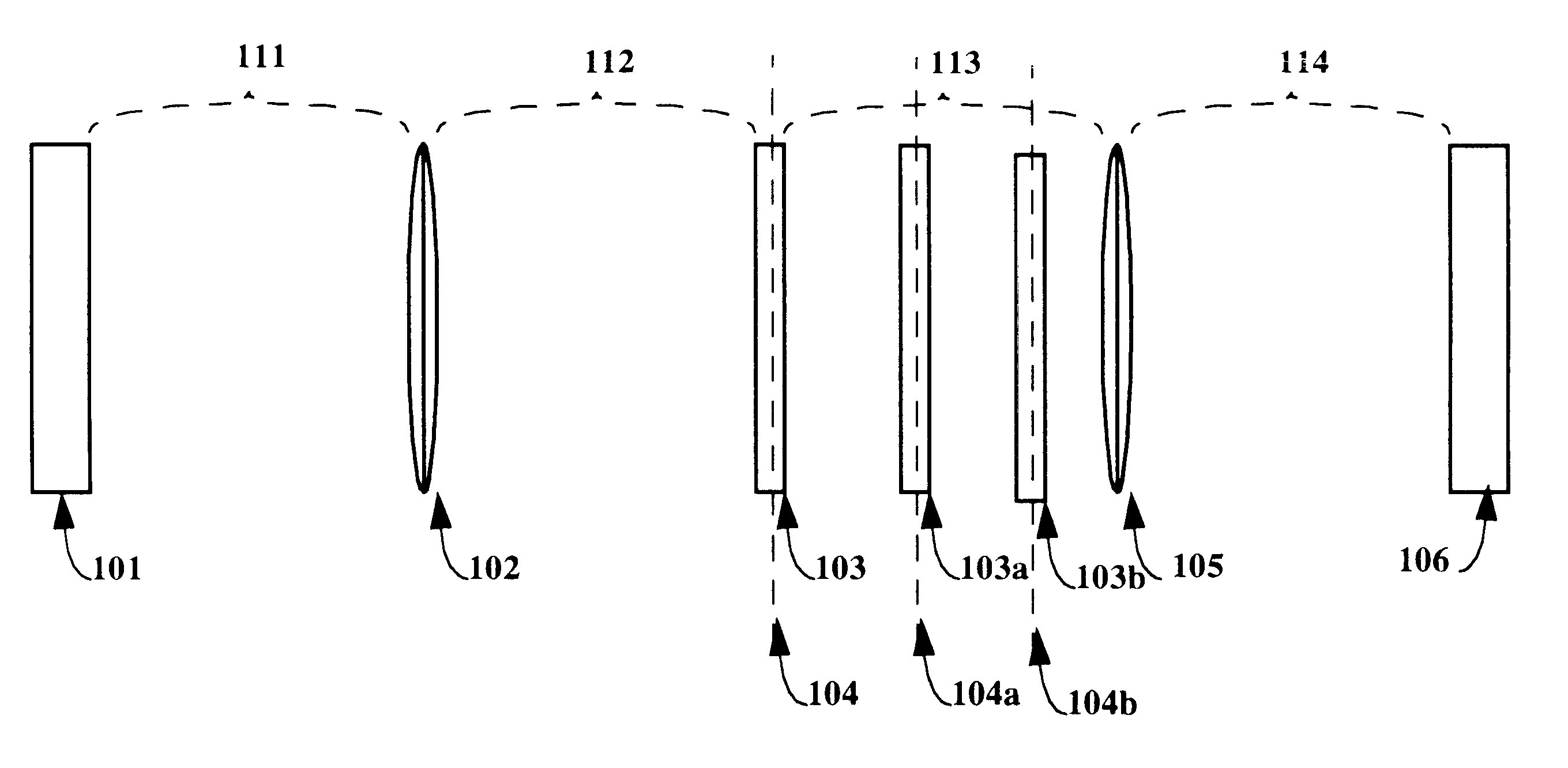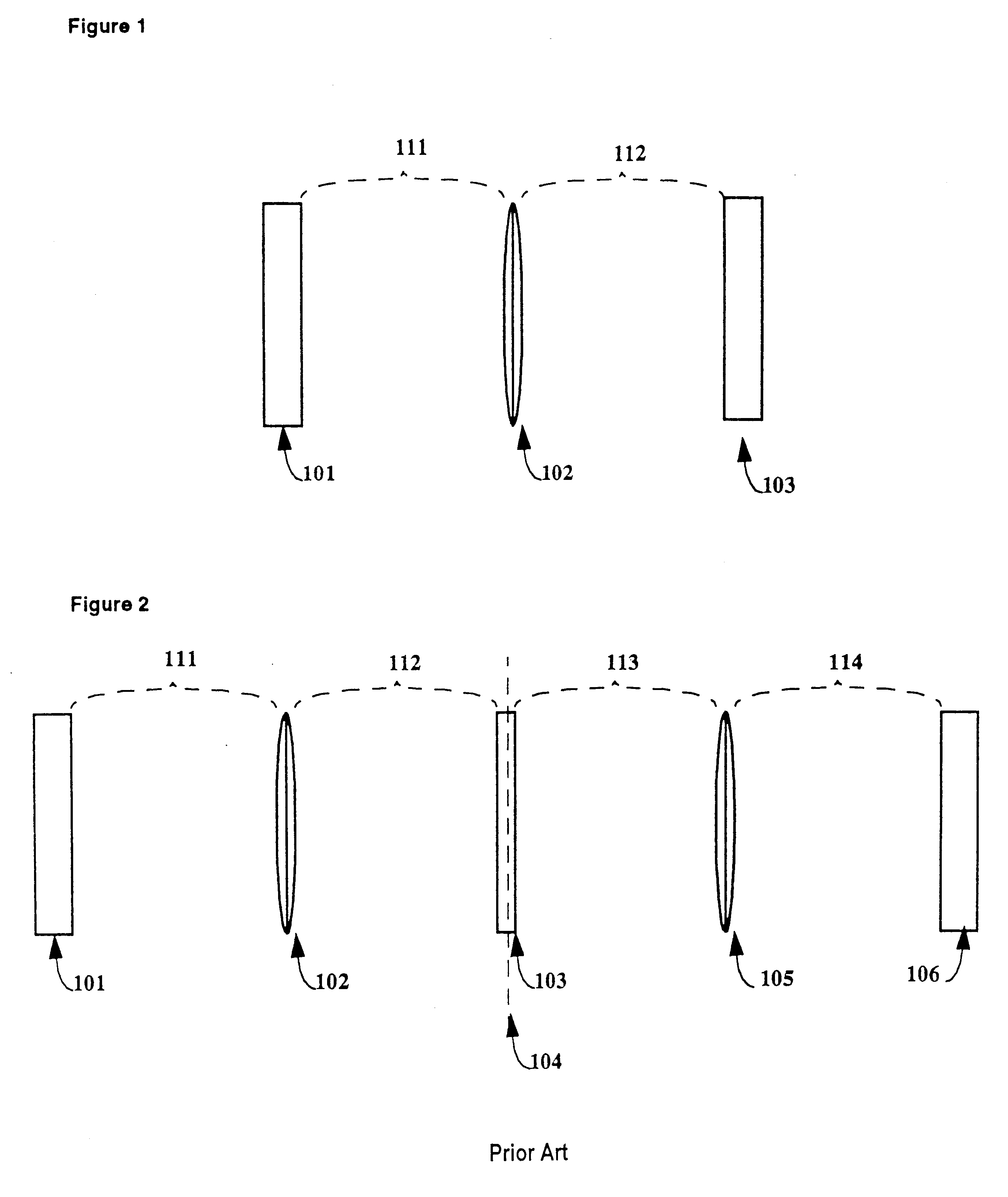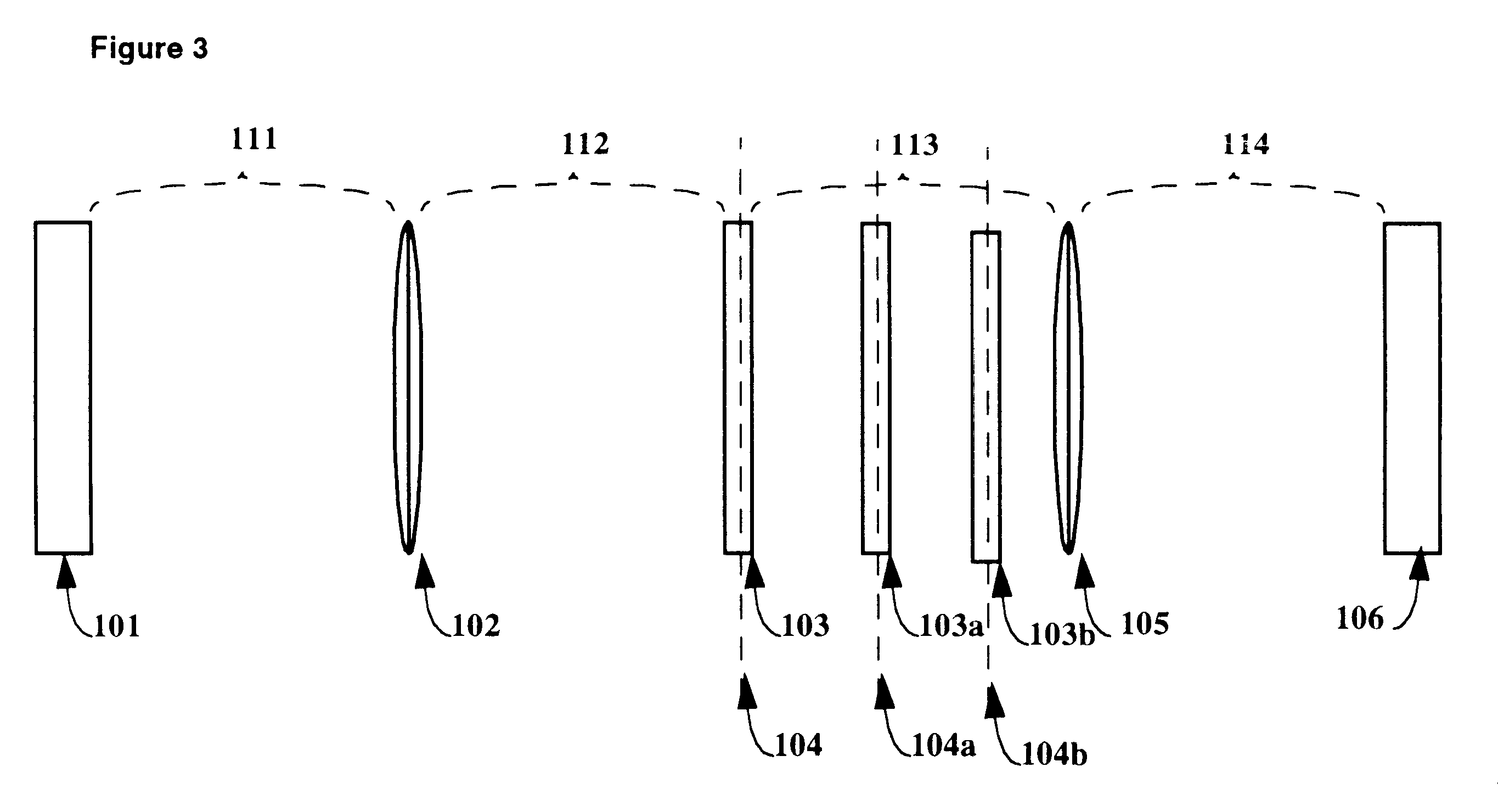Image processing utilizing non-positive-definite transfer functions via fractional fourier transform
- Summary
- Abstract
- Description
- Claims
- Application Information
AI Technical Summary
Benefits of technology
Problems solved by technology
Method used
Image
Examples
Embodiment Construction
.
FIG. 1 shows a general arrangement involving an image source, lens or lens system or other equivalent, and an image observation entity, capable of classical geometric optics, classical Fourier optics, and fractional Fourier transform optics.
FIG. 2 shows a Classical Fourier Optics image processing arrangement with an optical transfer function element introduced in the Fourier plane, using two lenses to realize the Fourier plane.
FIG. 3 shows the exemplary introduction of two additional optical transfer function elements introduced outside the Fourier plane.
The invention is concerned with processing presented image data, either recorded or realtime provided by an exogenous system, means, or method. This image data can be presented by means of an electronic display (such as an LCD panel, CRT, LED array, or other technologies), films, slides, illuminated photographs, or the output of some exogenous system such as an optical computer, integrated optics device, etc. The presented image da...
PUM
 Login to View More
Login to View More Abstract
Description
Claims
Application Information
 Login to View More
Login to View More - R&D
- Intellectual Property
- Life Sciences
- Materials
- Tech Scout
- Unparalleled Data Quality
- Higher Quality Content
- 60% Fewer Hallucinations
Browse by: Latest US Patents, China's latest patents, Technical Efficacy Thesaurus, Application Domain, Technology Topic, Popular Technical Reports.
© 2025 PatSnap. All rights reserved.Legal|Privacy policy|Modern Slavery Act Transparency Statement|Sitemap|About US| Contact US: help@patsnap.com



